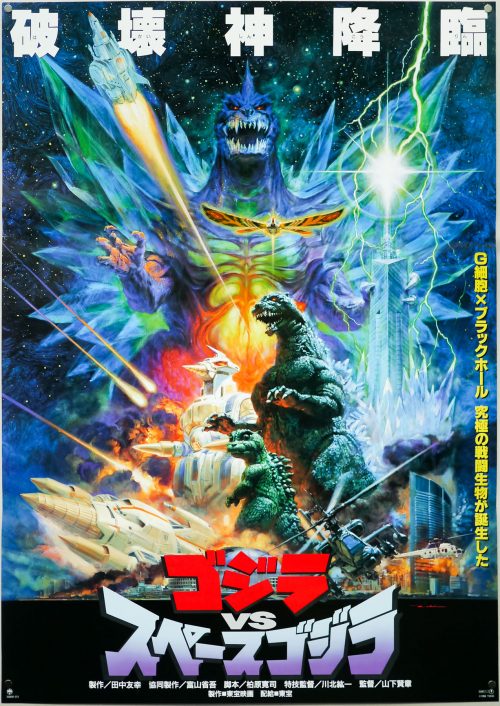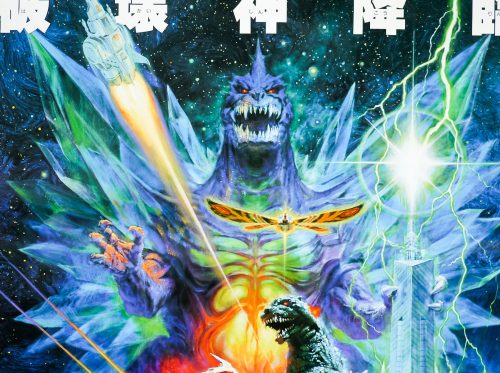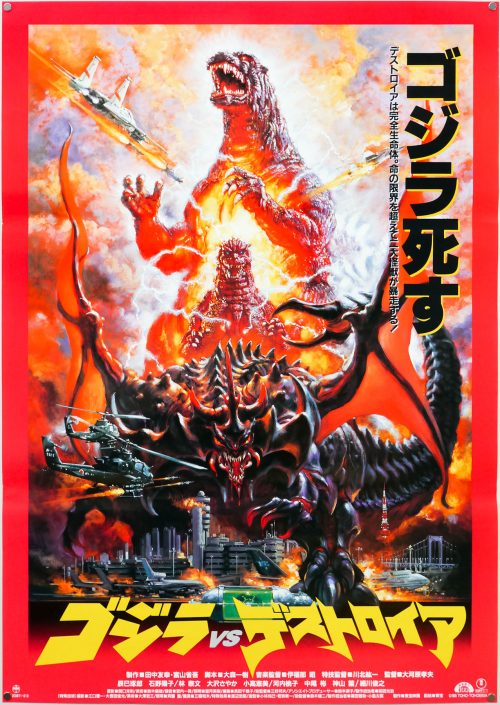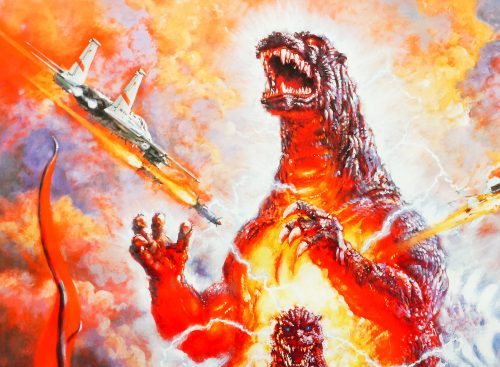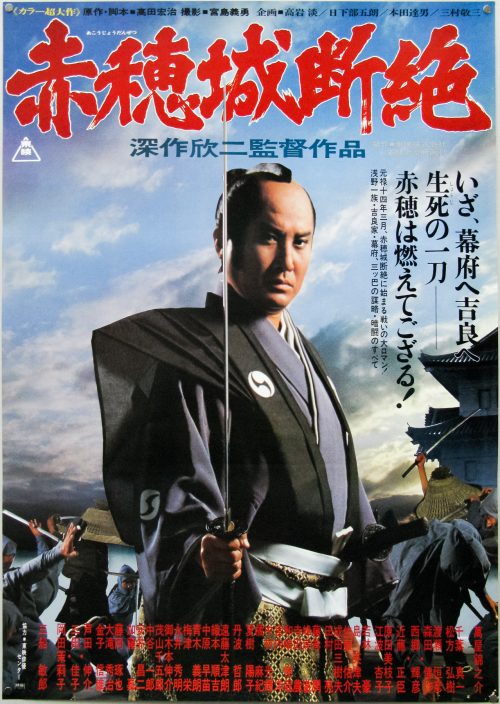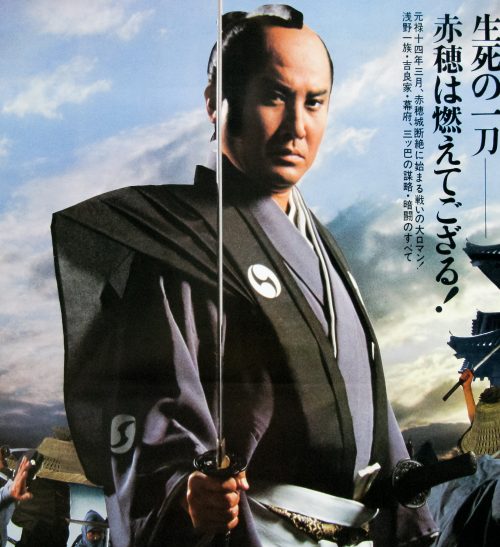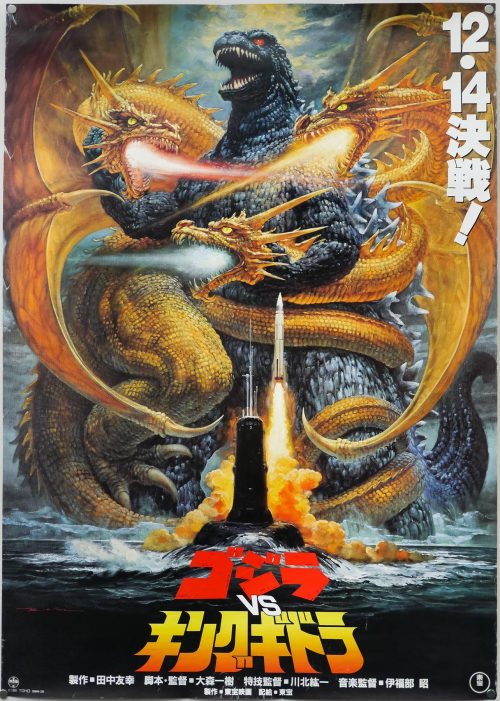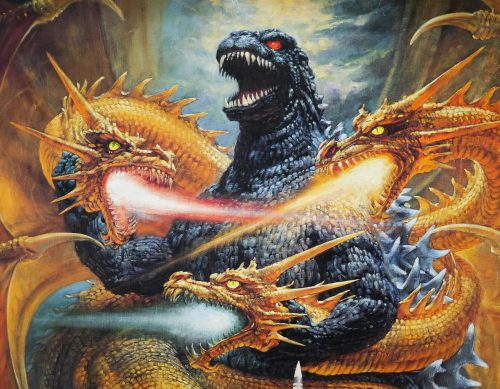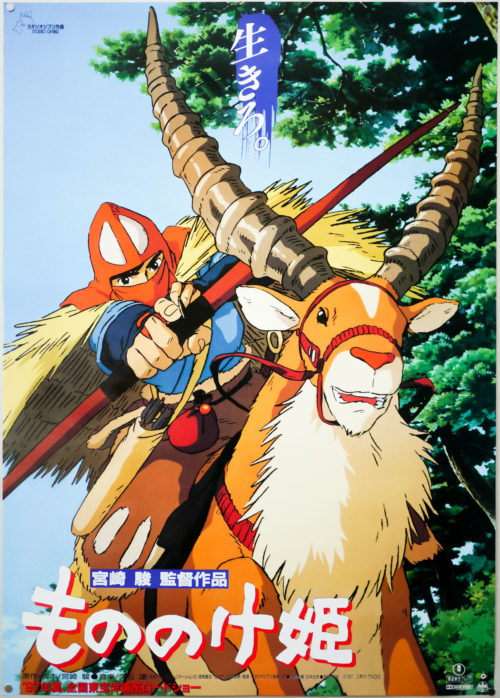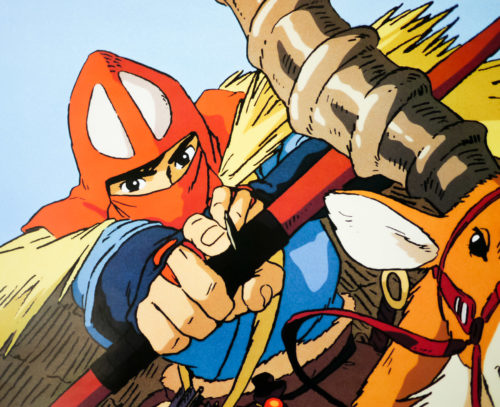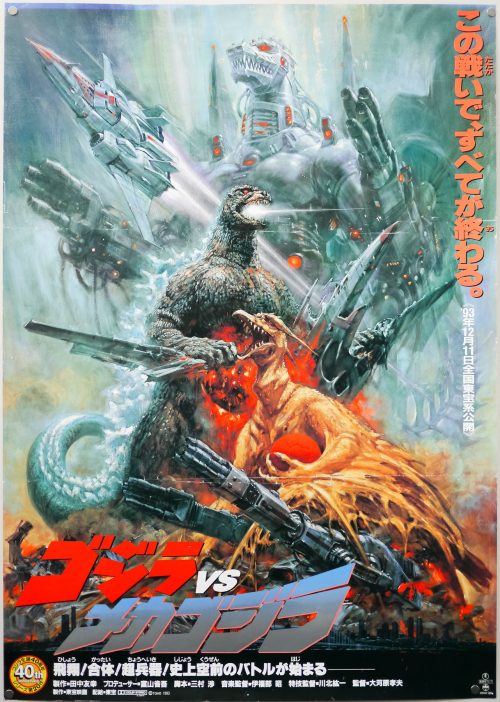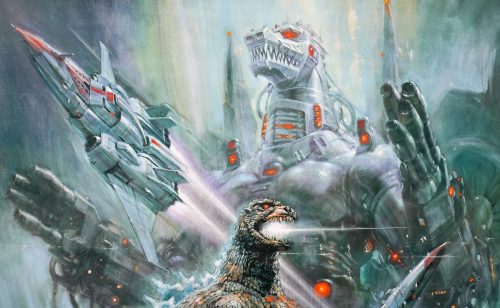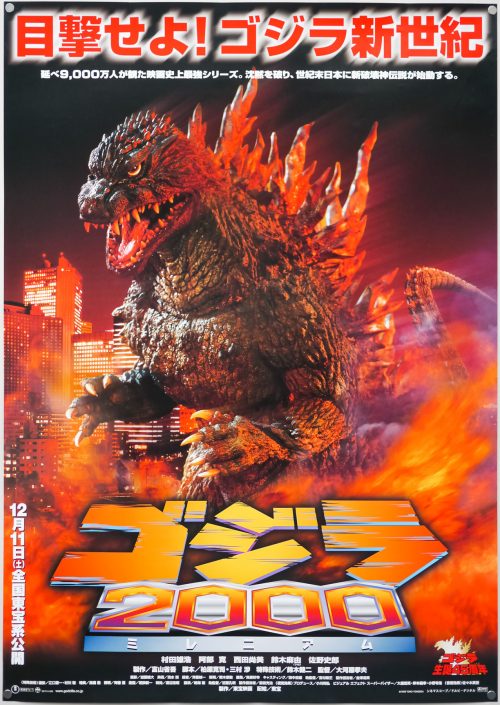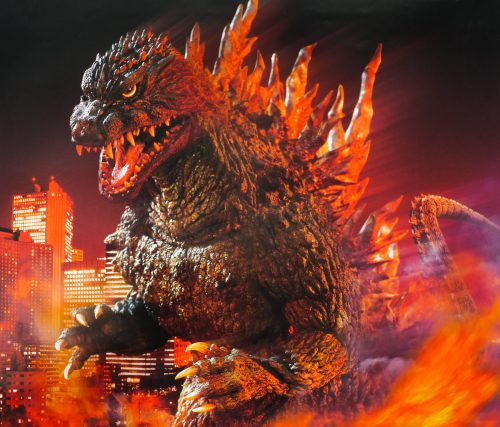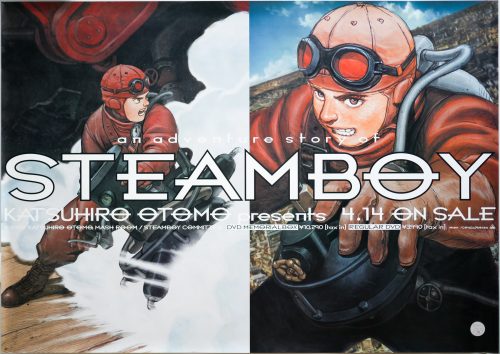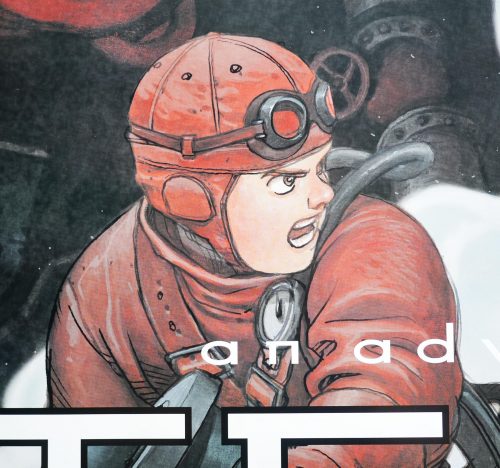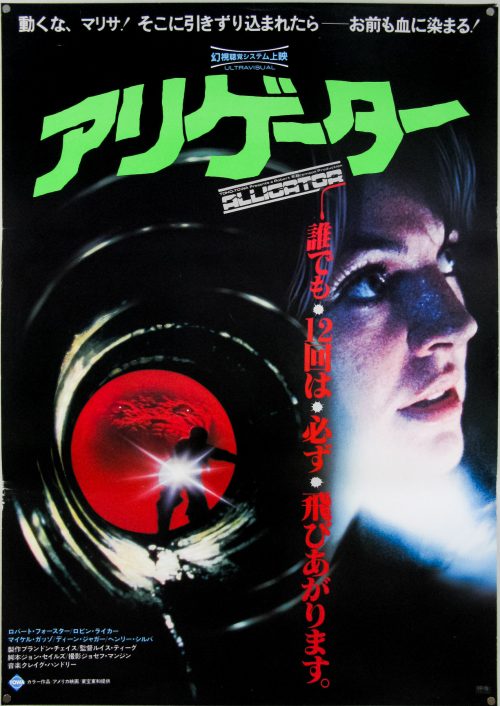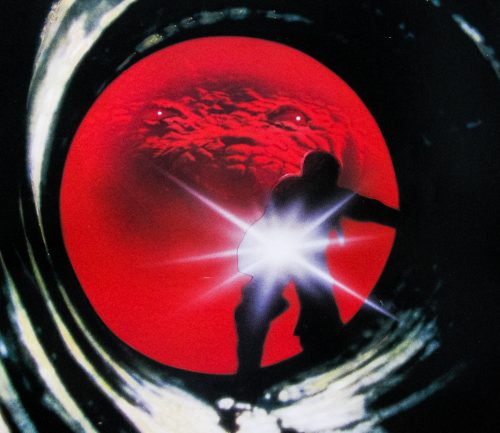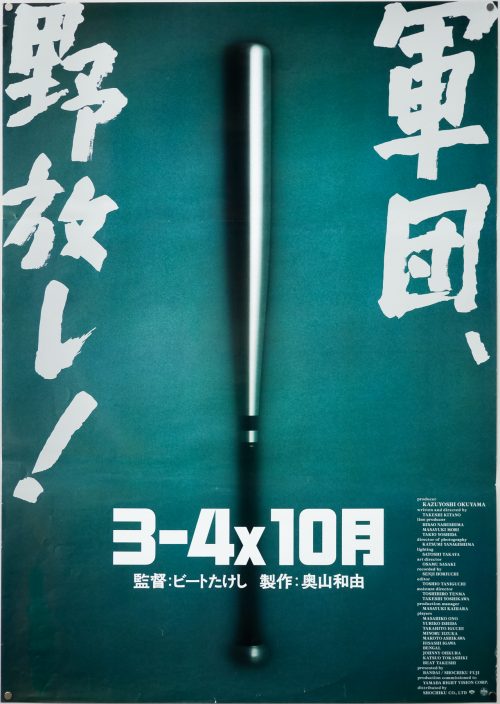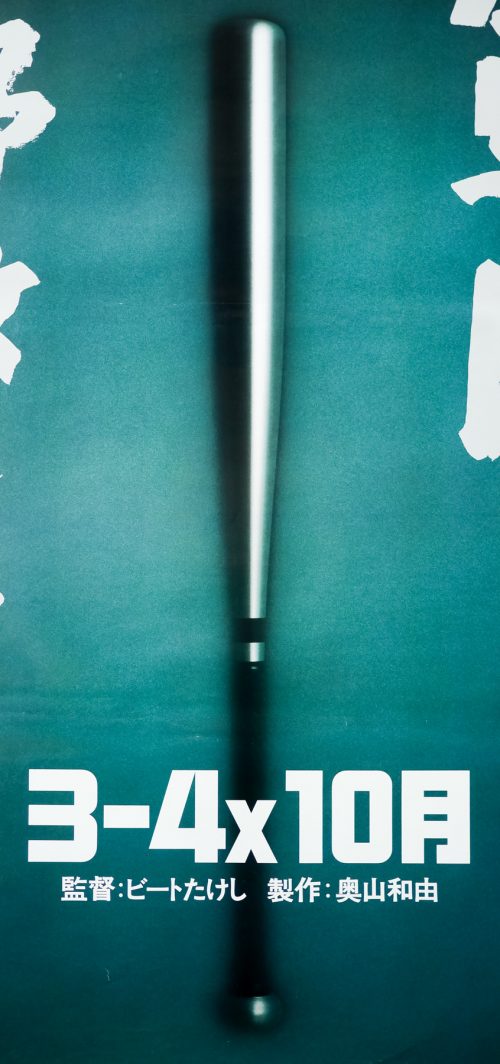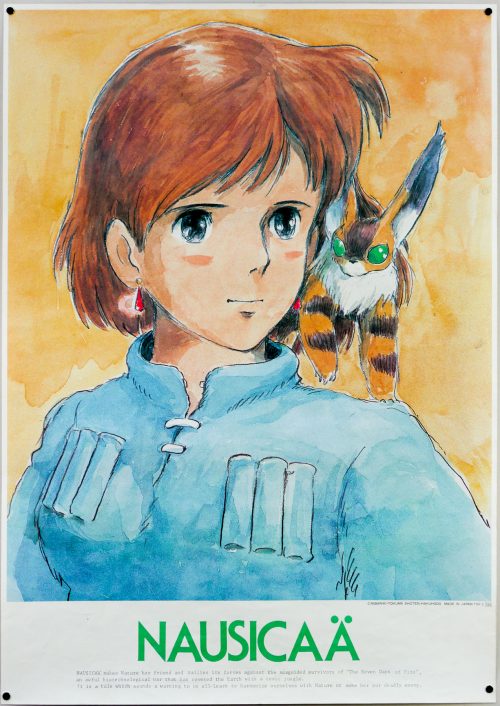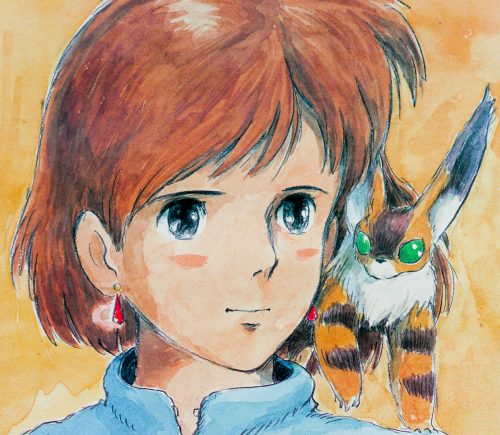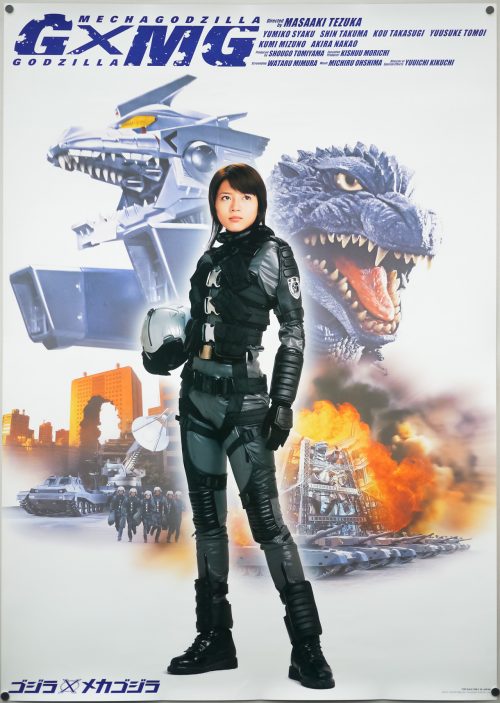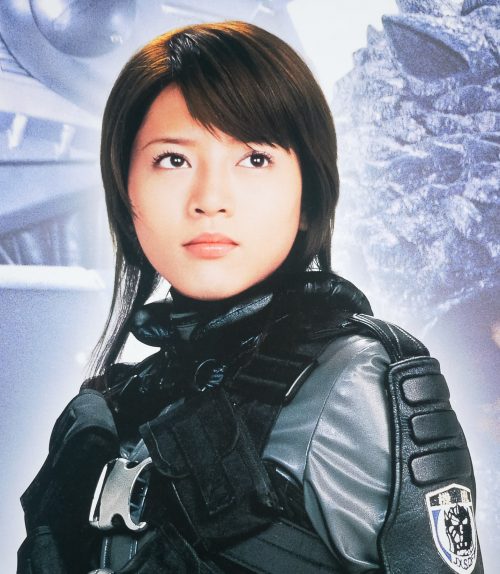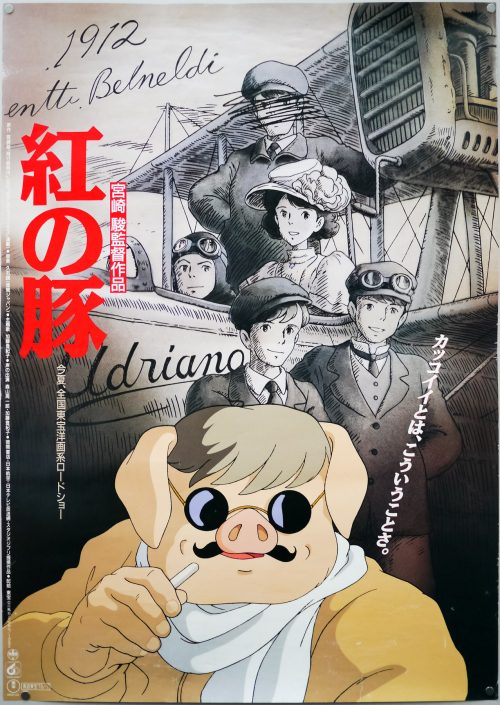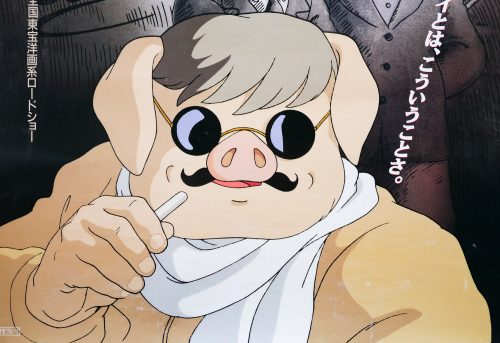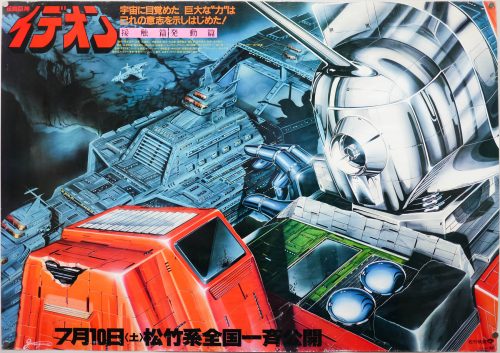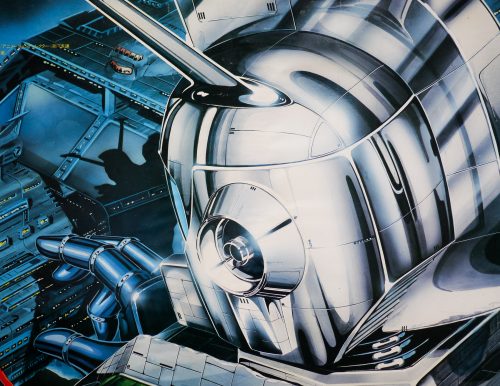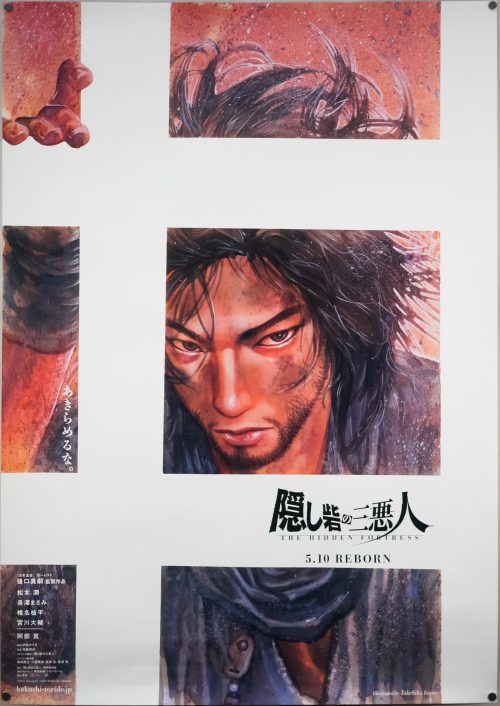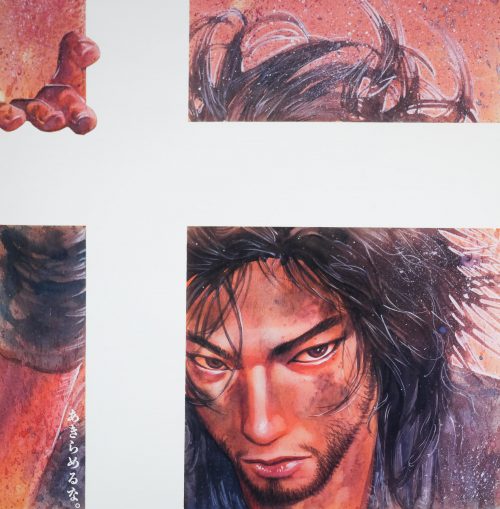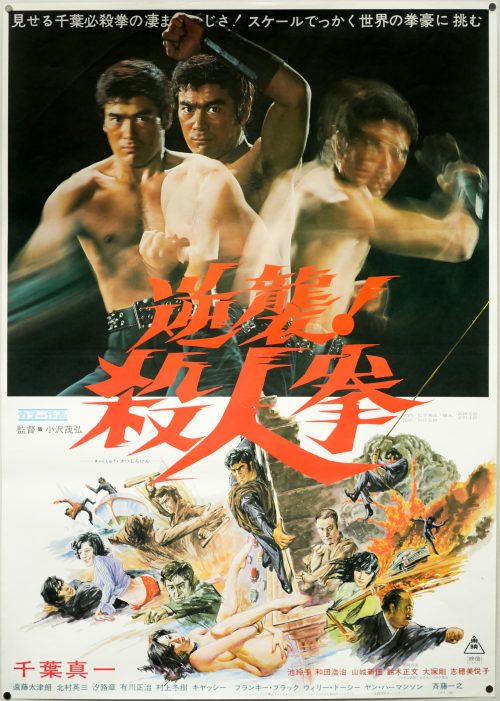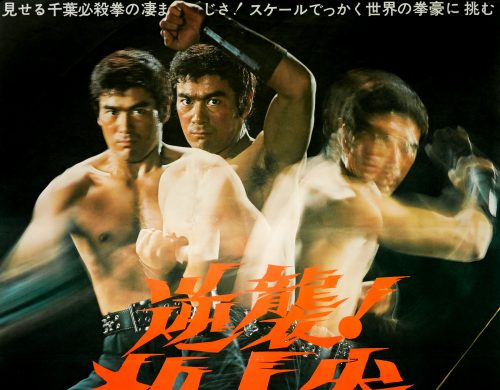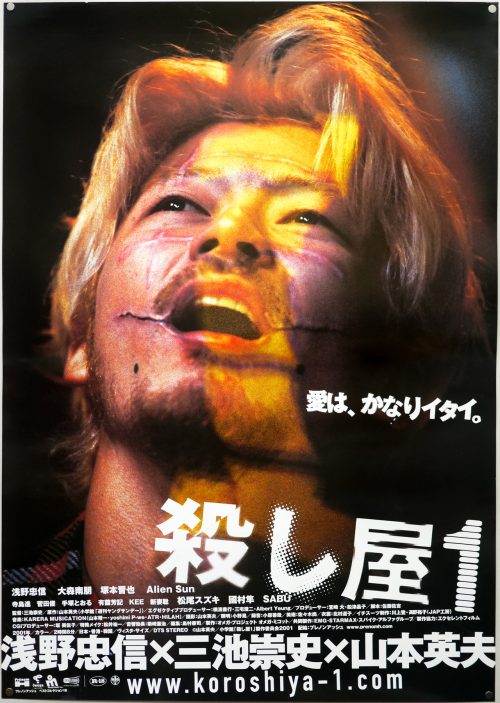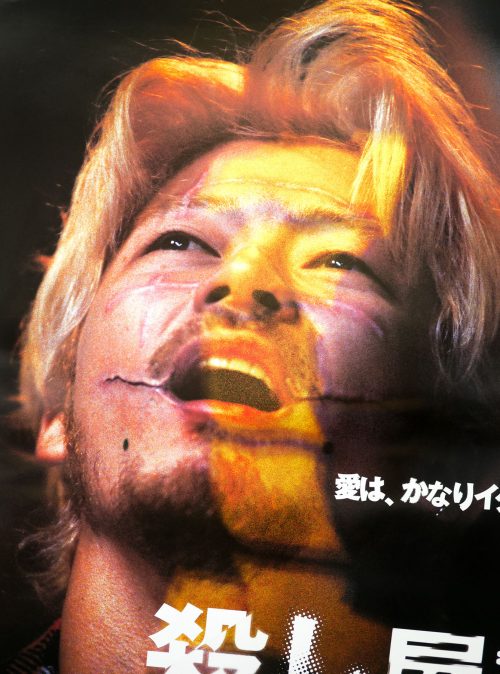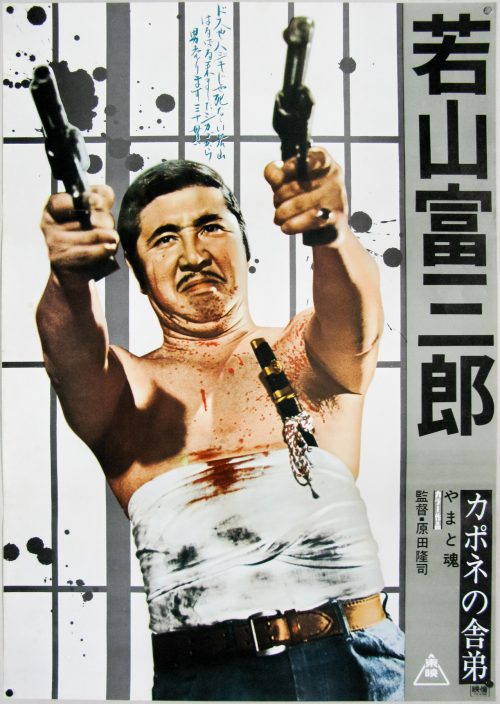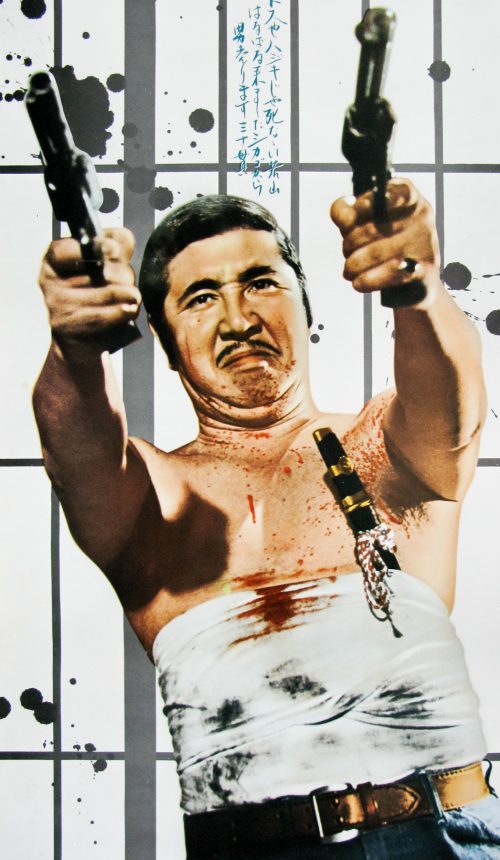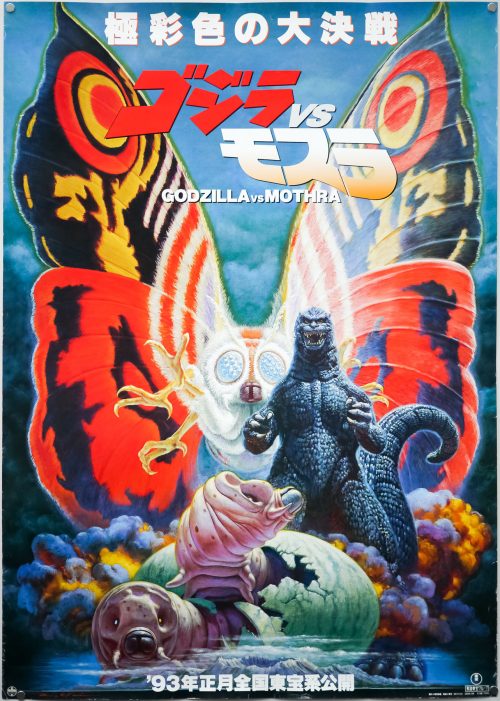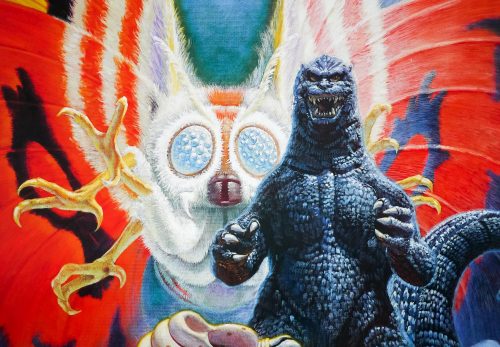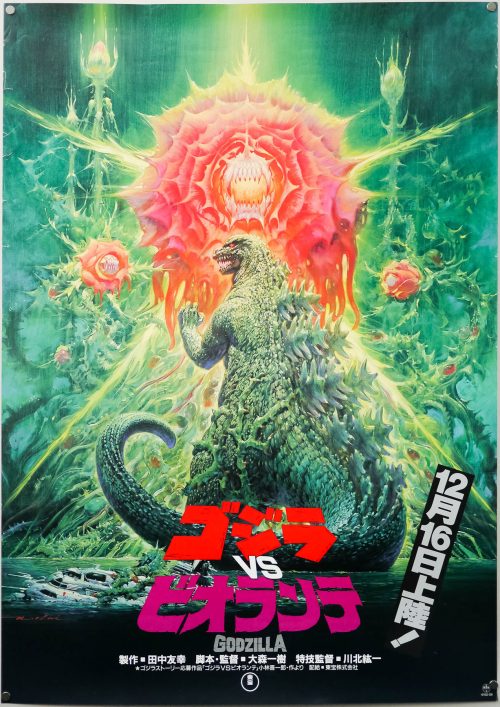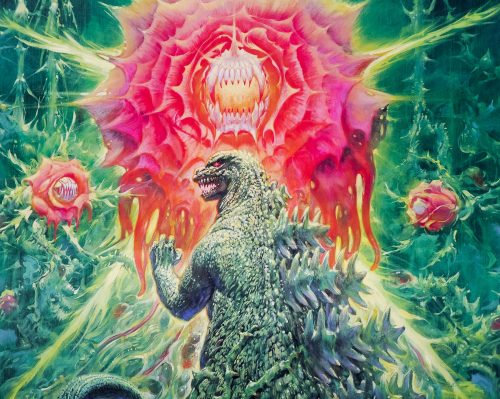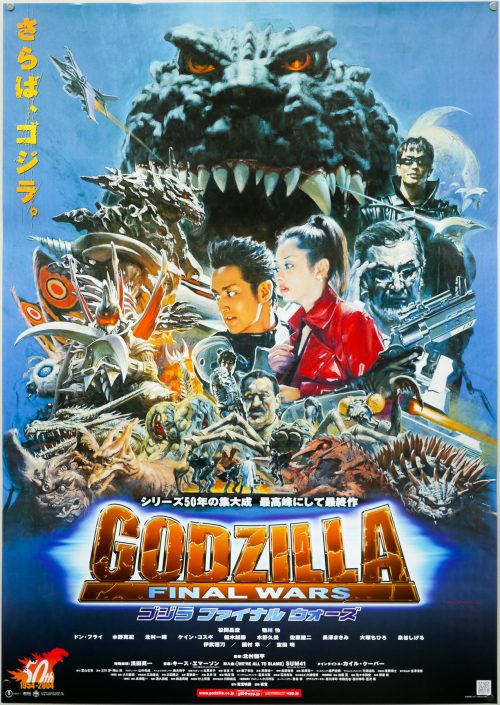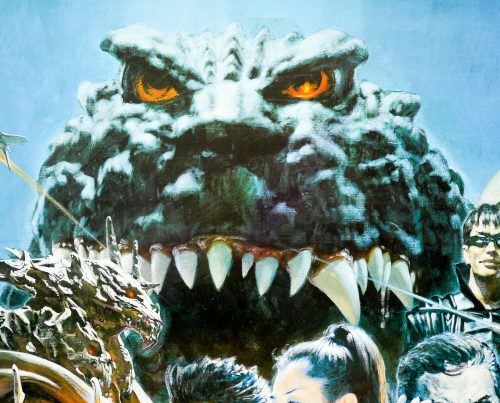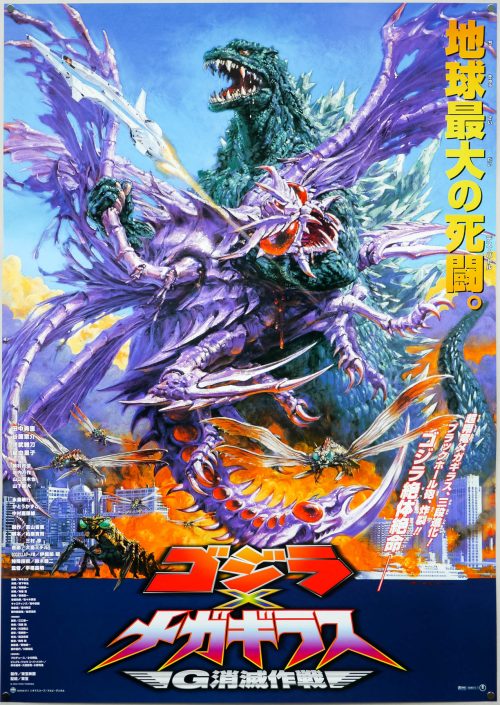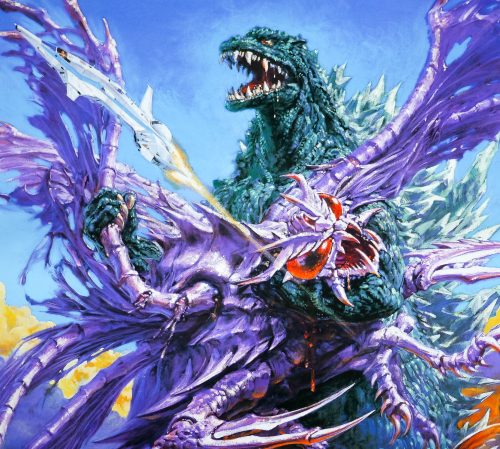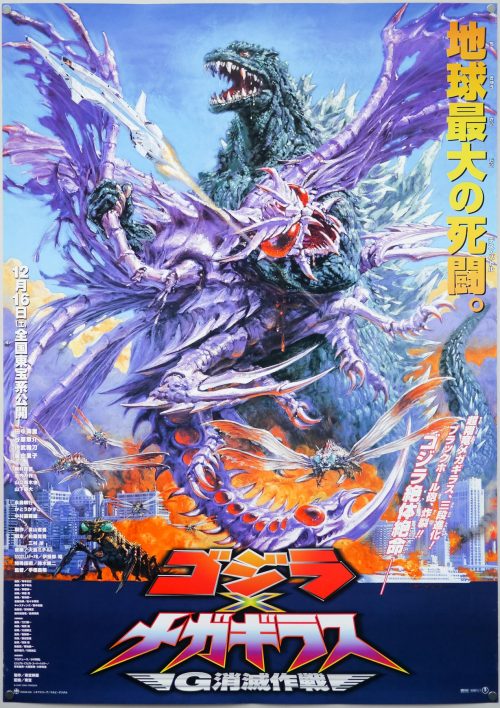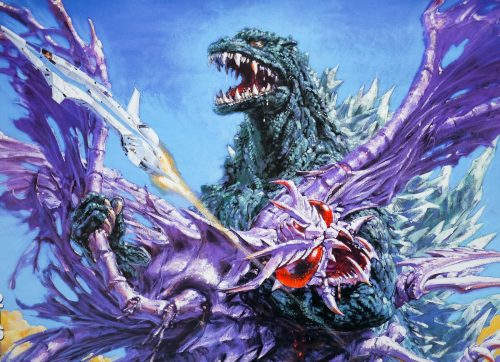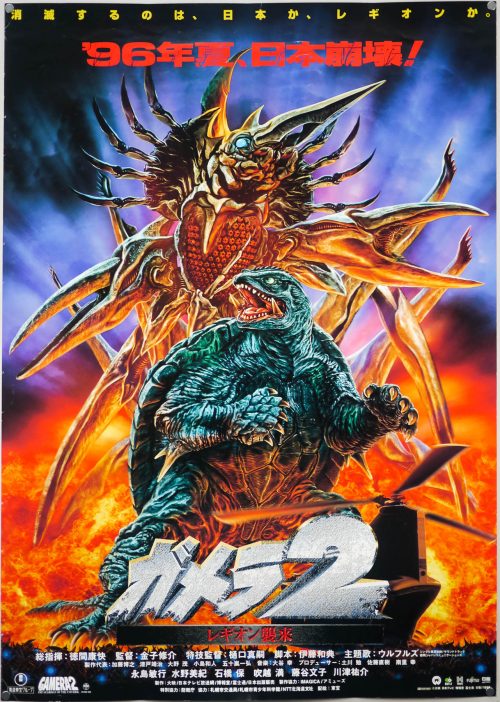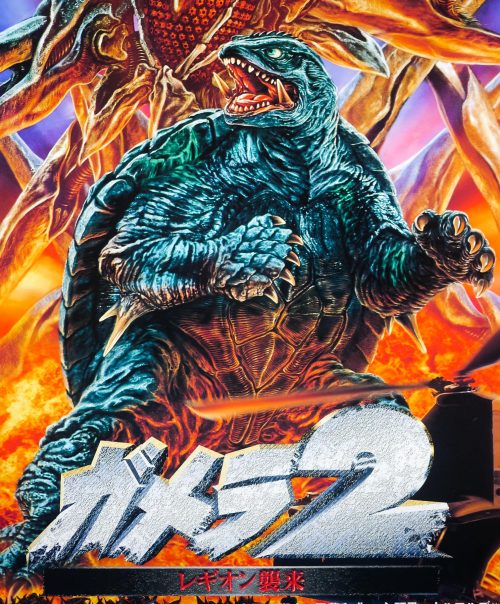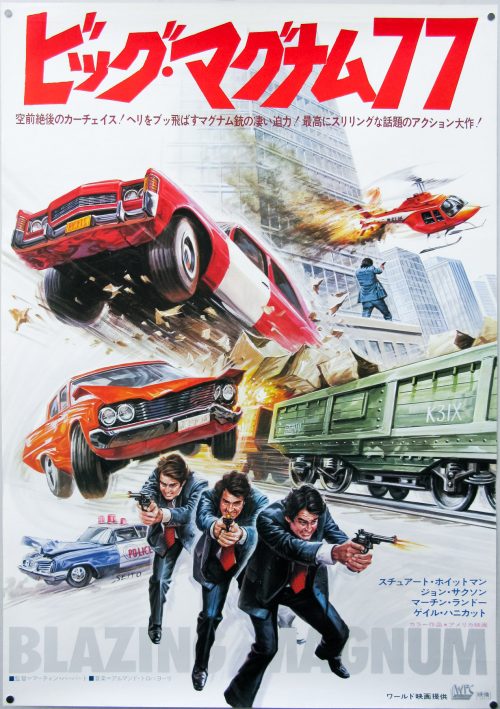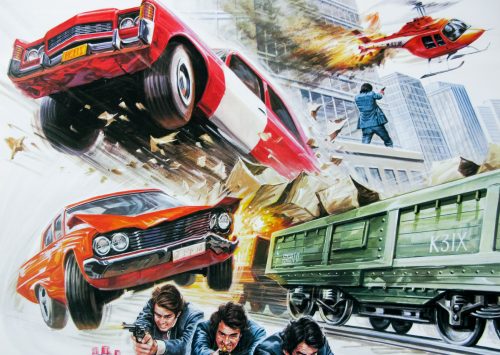- AKA
- Gojira VS Supesugojira (Japan - original title)
- Year of Film
- 1994
- Director
- Kensho Yamashita
- Starring
- Megumi Odaka, Jun Hashizume, Zenkichi Yoneyama, Akira Emoto, Towako Yoshikawa, Yôsuke Saitô, Kenji Sahara, Akira Nakao, Kôichi Ueda
- Origin of Film
- Japan
- Genre(s) of Film
- Megumi Odaka, Jun Hashizume, Zenkichi Yoneyama, Akira Emoto, Towako Yoshikawa, Yôsuke Saitô, Kenji Sahara, Akira Nakao, Kôichi Ueda,
- Type of Poster
- B2
- Style of Poster
- Artwork
- Origin of Poster
- Japan
- Year of Poster
- 1994
- Designer
- Unknown
- Artist
- Noriyoshi Ohrai
- Size (inches)
- 20 6/16" x 28 14/16"
- SS or DS
- SS
- Tagline
- --
A colourful montage on this Japanese B2 poster for Godzilla vs SpaceGodzilla, which was the 21st film in the series featuring the King of the Kaiju (giant monsters). The film was the sixth release in the second generation of Godzilla films, which were part of the Heisei era of Japanese monster movies (daikaiju eiga). The monster movie eras are named after the Japanese emperor at the time, so the first generation of Godzilla films were part of the Shōwa era.
The story is typically ludicrous and sees fellow kaiju Mothra travel in to space to stop a meteor hitting earth and inadvertently exposing cells from Godzilla (and Biollante) to the radiation from a black hole, which then triggers the creation of an aggressive extraterrestrial closely resembling the famous monster. SpaceGodzilla immediately heads to earth, destroying a space station on the way, and after battling and knocking out Godzilla it imprisons his son on Birth Island and heads to Japan intent on destruction. The Japan Self Defense Forces have time to scramble their latest weapon in the fight against kaiju, the penguin-like robot called Mogeura. But is it enough to stop the rampaging alien?
The artwork on the poster is by the late Noriyoshi Ohrai who was something of an enigma, even in his native Japan. He’s responsible for a number of Star Wars posters, including this lovely 1982 B2 to celebrate the release of the Japanese dubbed version of the original film and the brilliant design for The Empire Strikes Back.
Ohrai painted a poster for each of the Heisei era of Godzilla films, which were always accompanied by a photographic-style poster.
The other Ohrai posters I’ve added to the site so far can be seen by clicking here.
